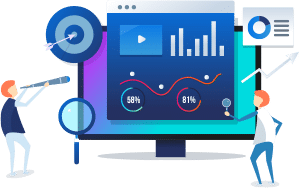How Transportation and Logistics are getting Disrupted and Redefined
The transportation and logistics sectors are going through a significant transformation right now. Across the industry, both operating models and profitability are under strain. The pace of transformation for large manufacturing and retail customers may turn out to be even faster than that for final private consumers. Both individual and enterprise customers now expect to get shipments faster, flexibly, and more transparently at a lower price. These rapid changes in customer expectations have resulted in new entrants to the industry who are challenging the incumbent players with their ML and AI-based platforms and redefining the logistics business model. The new sharing business models have as much of an impact on the sector as new technology. The biggest challenge facing incumbent logistics players is the entry of current enterprise customers and suppliers in the logistics sector, squeezing the incumbents’ margin.
The exposure of global logistics – which together with transportation, accounts for 10–12% of the global GDP, or more than $8 trillion. Overall spending on business logistics in the US reached 8% ($1.6 trillion) of the total United States GDP of $20.5 trillion in 2018. The Indian logistics sector is expected to reach $215 bn by 2020 – 2021. In terms of global VC funding in the logistics sector, there has been more than 76% funding growth p.a. between 2014 and 2019, and the three major economies who got the maximum funding were China, the United States, and India.
In the last five years, new-age start-ups have come up with innovative business models and received a lot of attention from VCs. During this period, the maximum funding has gone to 3 types of business models, i.e., Last-Mile Delivery Providers (New DaDa, Hivebox), Road Freight Marketplaces (Blackbuck, Convoy, Manbang), and Warehousing (ESR, NewEase). By 2022, approx. $87.8 bn is going to be invested in this sector, and between 2018 and 2019, $26 bn have already been invested.
The biggest challenge and opportunity in front of the large CPG, FMCG, Hi-tech and Retail enterprises is Network Optimization to improve the supply chain cost, meet service levels with retail customers, and deliver a high-quality experience to end-consumers by maintaining transparency and predictability. When we talk about Network Optimization, it primarily focuses on streamlining four major elements of a supply chain network:
- Physical Flow of Goods – Transportation, route planning and logistics optimization
- Location Intelligence – Accurate placement of supply chain nodes, warehouses, and distribution hubs
- Inventory Optimization – Multi-echelon inventory level optimization across the supply chain
- Strategic Sourcing – Optimizing sourcing costs and procurement processes using data intelligence
The large enterprises in CPG, FMCG, Hi-Tech, and Retail sectors are investing heavily in Supply Chain Digital Twin to optimize their Network, which is perceived to be an ideal approach for Network Optimization. A Supply Chain Digital Twin is a virtual replica of a real-world supply chain model and business processes designed to optimize every element of the supply chain. With the help of a Digital Twin, enterprises can not only optimize delivery networks but also prepare for contingencies in advance, speed up last-mile deliveries, improve customer experience, and also expand the supply chain smoothly. What-If Scenario Simulation, Sensitivity Studies, and Constraint Studies are also some popular approaches to achieve network optimization in the supply chain. These approaches are unlocking the true potential of the supply chain network with the combined potential of human and artificial intelligence.
Some of the startups revolutionizing the Transportation and Logistics sectors with the help of Automation, ML, AI, and Blockchain are Xeneta, Four Kites, Optoro, ShipChain, C3 Logistics, Remi, Carto, Loginext, Intellias, Sievo, Zycus, and GEP.
Based on a recent report by PwC, Shifting Patterns – The Future of the Logistics Industry, the key disruptions facing the Logistics sector in the coming decade are:
• Sharing the PI(e) – Incumbents increase their efficiency and reduce their environmental impact by collaborating more and developing new business models, such as sharing networks. Research around the ‘Physical Internet’ (PI) leads to shared standards for shipment sizes, greater modal connectivity, and IT requirements across carriers.
• Start-up, Shake-up – New entrants become significant players and take market share from the incumbents through new business models based on Data Analytics, Blockchain, or other technologies. One or two become dominant in specific segments. Last-mile delivery becomes more fragmented, with crowd-delivery solutions gaining ground. These start-ups collaborate with incumbents and complement their service offers.
• Complex Competition – Big retail players expand their logistics offerings to fill their own needs and beyond, effectively moving from customers to competitors. They purchase small logistics players to help cover major markets and draw on their deep understanding of customer behavior to optimize supply chains. Technology firms that used to be suppliers to the industry enter the logistics arena too, offering logistics services and turning into competitors.
• Scale Matters – Incumbents increase efficiency by streamlining their operations and taking full advantage of new technology. They fund promising new technologies with venture capital cash and attract new staff with critical skills and expertise in competition to create a dominant market position. Major players merge to extend their geographical scale and enhance their cross-modal coverage. Access to capital to fund these investments becomes increasingly important.
In the coming decade, the Digital Fitness of Logistics providers will be a prerequisite for success: the winners will be those who understand how to exploit a whole range of new technologies, from data analytics to automation and platform solutions. But with so many technologies competing for management attention and investment, defining a clear digital strategy that’s integrated into business strategy will be critical. Besides Digital Fitness, both horizontal and vertical collaboration among the incumbent players as well as between incumbent and new-age platform start-ups is going to redefine the industry. According to experts in the Logistics sector, higher levels of efficiency could be achieved by more consistent standards, defined through the Physical Internet and increased collaboration, whether in the form of alliances, joint ventures, or M&A.
At Course5 Intelligence, we work extensively in the CPG, FMCG, Technology, and eCommerce sectors. Through our Course5 Discovery solution, we deliver relevant, actionable, and near real-time operational insights to analysts, mid-management, and the senior management personas in the Transportation and Logistics function, and bring transparency, predictability and faster decision making into the incumbent supply chain process. To learn more about our ML and AI-powered value offering, do visit our website and request for a DEMO of our solution.


Sushant Ajmani
Sushant is a seasoned digital analytics professional who has been working in the industry for over 23 years. He has worked with over 180+ global...Read More

Don’t miss our next article!
Sign up to get the latest perspectives on analytics, insights, and AI.







